Microsoft HoloLens hands-on: Is it enterprise-ready?
Microsoft serves up a slice of the future
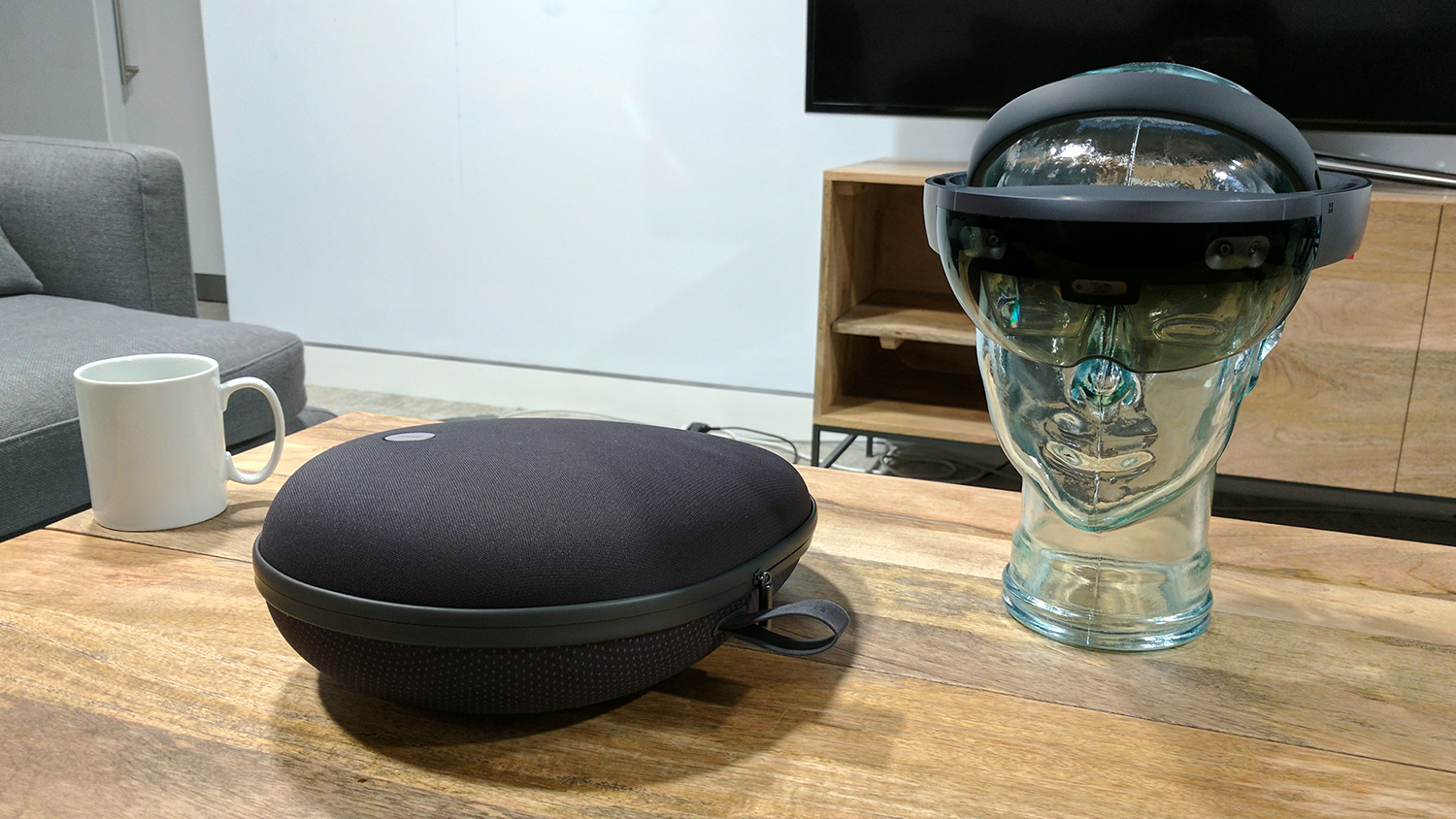

HoloLens field of view
HoloLens does have one major problem, however, and that's the tiny field of view (FOV). While the transparent visor means you can see your surroundings perfectly, the actual frame in which the holographic content is visible is a tiny subset of your field of vision.
It's roughly equivalent to viewing a 24in monitor from around a meter away. This may not sound like a big deal, but when you're looking at room-scale or large format content, it can feel like trying to watch a film through a cardboard tube.
We also found that the frame's placement was a little odd - it was just above the centre of our vision, meaning we spent a lot of time with our head angled down in order to get key content into view. This could simply be an issue of calibration or headset fit, though.
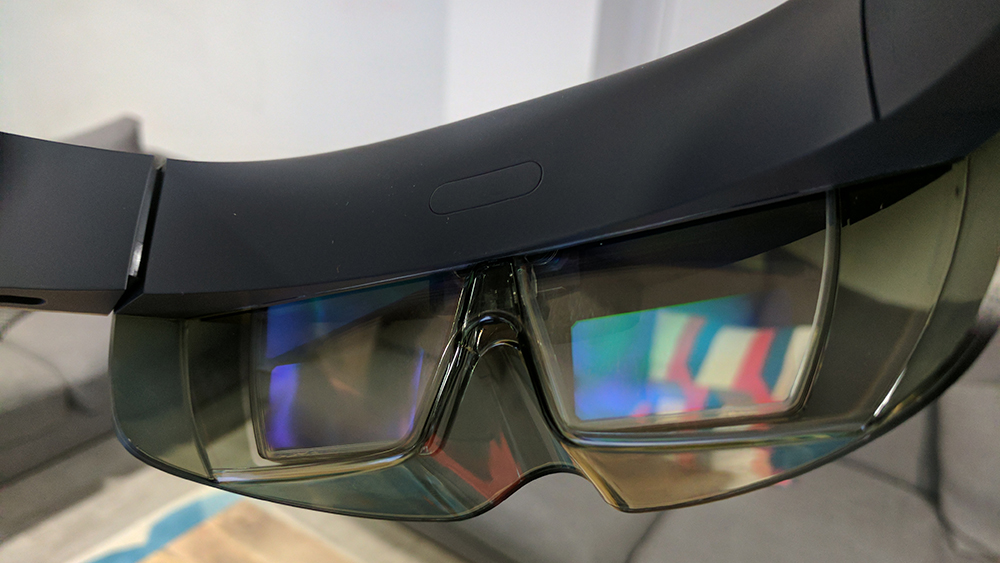
The limited FOV is particularly jarring after using VR, where the user's field of vision is much closer to real life, but this is partially a problem of attitude. VR very much encourages getting up close and personal with whatever you're interacting with, whereas HoloLens works best when you step back and look at the big picture. In fact, get within about a foot of the actual image and it'll disappear, as your proximity starts to interfere with the HoloLens's sensors.
On the other hand, once you get past the issues with the miniscule FOV, HoloLens's picture quality is staggering. Given that AR is a very new field, even more than VR is, you might expect the display itself to be a little rough around the edges. You'd be wrong, though; in terms of image quality, the HoloLens is up there with consumer-grade VR headsets.
As part of our hands-on, we were taken through a couple of experiences that Microsoft has been using to show off HoloLens's capabilities. They weren't particularly interactive affairs - we were essentially just clicking through a 3D slideshow - but they showcase some of the more interesting applications.
HoloLens applications
Engineering and design modelling
Get the ITPro daily newsletter
Sign up today and you will receive a free copy of our Future Focus 2025 report - the leading guidance on AI, cybersecurity and other IT challenges as per 700+ senior executives
One of the demos we were shown was for a piece of design software built by Trimble, a technology company which produces solutions for the architecture, engineering and construction industries. An extension for popular 3D design program SketchUp, the software allows users to bring 3D models into the real world.
In the demo we saw, a digital 3D model of a building was placed in a blank space on a real mockup, using mixed reality to show us what it would look like as part of a city block. Within SketchUp, we could even manipulate the structure, changing the height of various buildings and watching the digital model grow and shrink in real time.
What was really impressive, though, was when we moved the mouse over to the edge of the screen and our cursor simply kept going, moving into our virtual environment. We could transition our interaction seamlessly from the desktop SketchUp software to the digital model overlaid onto the real world.
It's one of the first HoloLens demonstrations we've seen where the business use case is both immediately apparent and widely applicable. Trimble's extension is available to purchase now, and any designer that uses SketchUp (I.E. most of them) can use it to view real-world recreations of any of their projects.
Anatomical modelling
The first demo we tried was an anatomical experience developed in partnership with Case Western Reserve University, which guided us through the body's various systems. The skeletal structure, muscle groups and cardiovascular system were all reproduced with excellent detail and image quality, including a close-up of the heart that actually let us peer inside the valves.
This type of use case is the most obvious and widely-posited benefit of both AR and VR headsets - letting students and trainees get a detailed, interactive look at subject matter that would be difficult and/or costly to play with in real life. A similar application involves allowing designers and architects to visualise products and blueprints in 3D space without having to do any modelling or prototyping.
Delivering presentations
A second example took us through how HoloLens can be used to create and deliver presentations, by showcasing an in-store display for a fictional watch brand. Assets could be dragged and dropped into the presentation, and there was even a virtual teleprompter to ensure that you can maintain eye contact while still having your notes handy.
You can also collaborate with other HoloLens users, who are represented by ghostly coloured figures. In a rather innovative twist, you can also see exactly where they're looking, thanks to a beam of light representing their gaze.
Skype
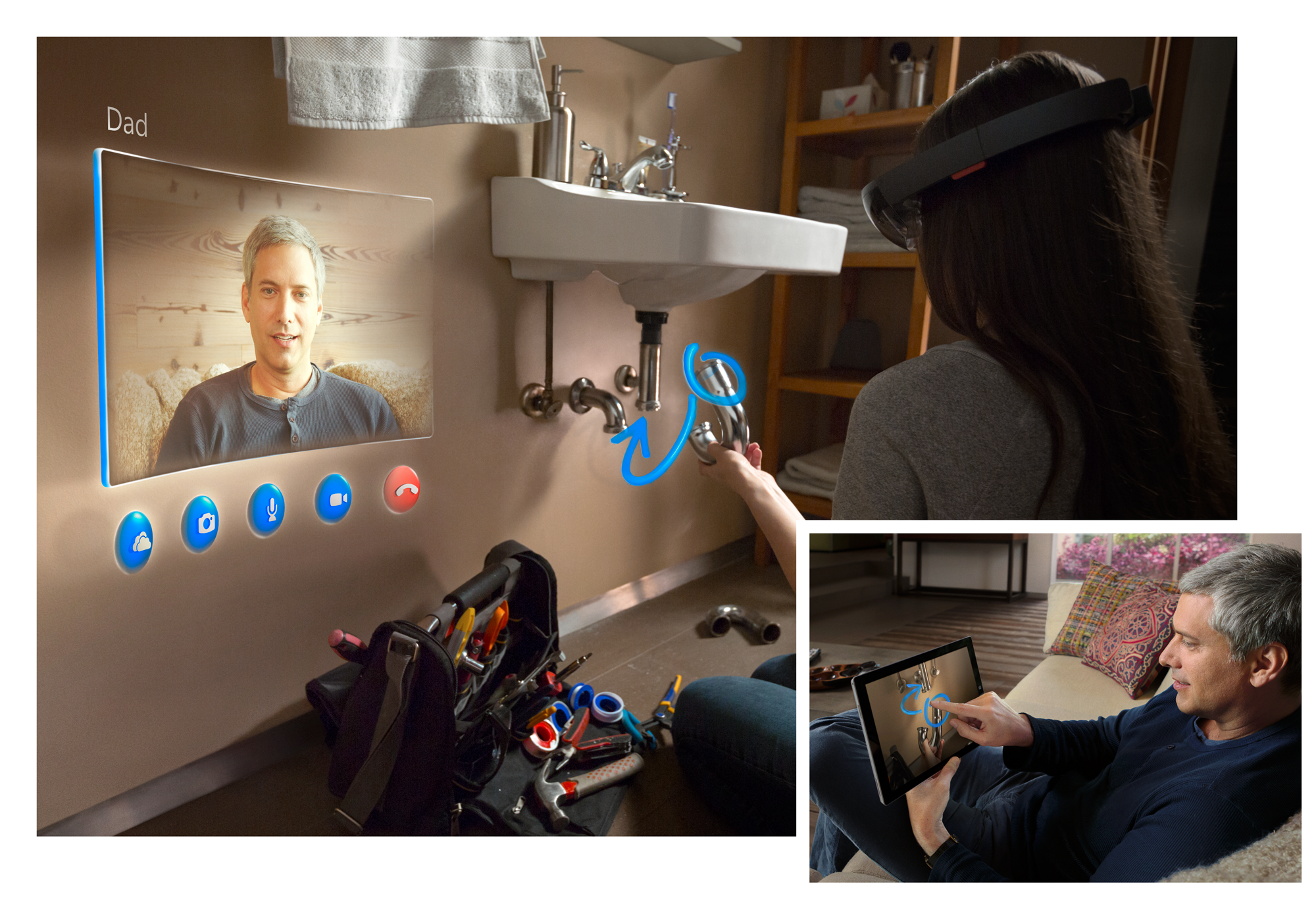
These collaborative uses are less commonly suggested but for our money, they're likely to be the more useful. Skype works straight out of the box (as do all Universal Windows Platform apps), which means that any maintenance worker or engineer faced with a particularly tricky job can simply pop on a HoloLens and get advice from colleagues around the world, who get a first-person look at the problem.
Similarly, having a business meeting via HoloLens means you can bring in 3D mapping data, product and brand assets and other digital information in a way that just wasn't possible before. More importantly, it doesn't cut you off from the rest of the world; meaning you can still communicate with colleagues in the real world, and use physical tools at the same time.
Is HoloLens fit for the enterprise?
HoloLens feels like something that could be very easily integrated with the workflow of most businesses, and there's a genuine value proposition there. It's certainly very impressive, as is indicated by the number of companies who are already using it. Customers include Thyssen-Krupp, Audi, Japan Airlines and many more.
However, there's one major stumbling block stopping Microsoft's AR headset from being ready for the big-time, and that's the FOV. Because the rest of your vision is unobstructed, you're always made acutely aware of the limited FOV by the fact that whatever you're looking at will just abruptly end in mid-air. This can make it a frustrating experience - if only because the rest of the headset shows so much polish and potential.
Given the limitations and design niggles mentioned above, it's clear that HoloLens is still far from a finished product. We'd also have liked to stress-test the hardware a little more, alongside testing how well UWP apps work - Microsoft's record with compatibility isn't exactly the best, after all.
However, based on our initial experiences, we can safely say that HoloLens is going to seriously shake up the future of computing. It's not going to replace traditional desktops any time soon, but beyond question, Microsoft has served up a slice of the future.
Adam Shepherd has been a technology journalist since 2015, covering everything from cloud storage and security, to smartphones and servers. Over the course of his career, he’s seen the spread of 5G, the growing ubiquity of wireless devices, and the start of the connected revolution. He’s also been to more trade shows and technology conferences than he cares to count.
Adam is an avid follower of the latest hardware innovations, and he is never happier than when tinkering with complex network configurations, or exploring a new Linux distro. He was also previously a co-host on the ITPro Podcast, where he was often found ranting about his love of strange gadgets, his disdain for Windows Mobile, and everything in between.
You can find Adam tweeting about enterprise technology (or more often bad jokes) @AdamShepherUK.
-
 Bigger salaries, more burnout: Is the CISO role in crisis?
Bigger salaries, more burnout: Is the CISO role in crisis?In-depth CISOs are more stressed than ever before – but why is this and what can be done?
By Kate O'Flaherty Published
-
 Cheap cyber crime kits can be bought on the dark web for less than $25
Cheap cyber crime kits can be bought on the dark web for less than $25News Research from NordVPN shows phishing kits are now widely available on the dark web and via messaging apps like Telegram, and are often selling for less than $25.
By Emma Woollacott Published
-
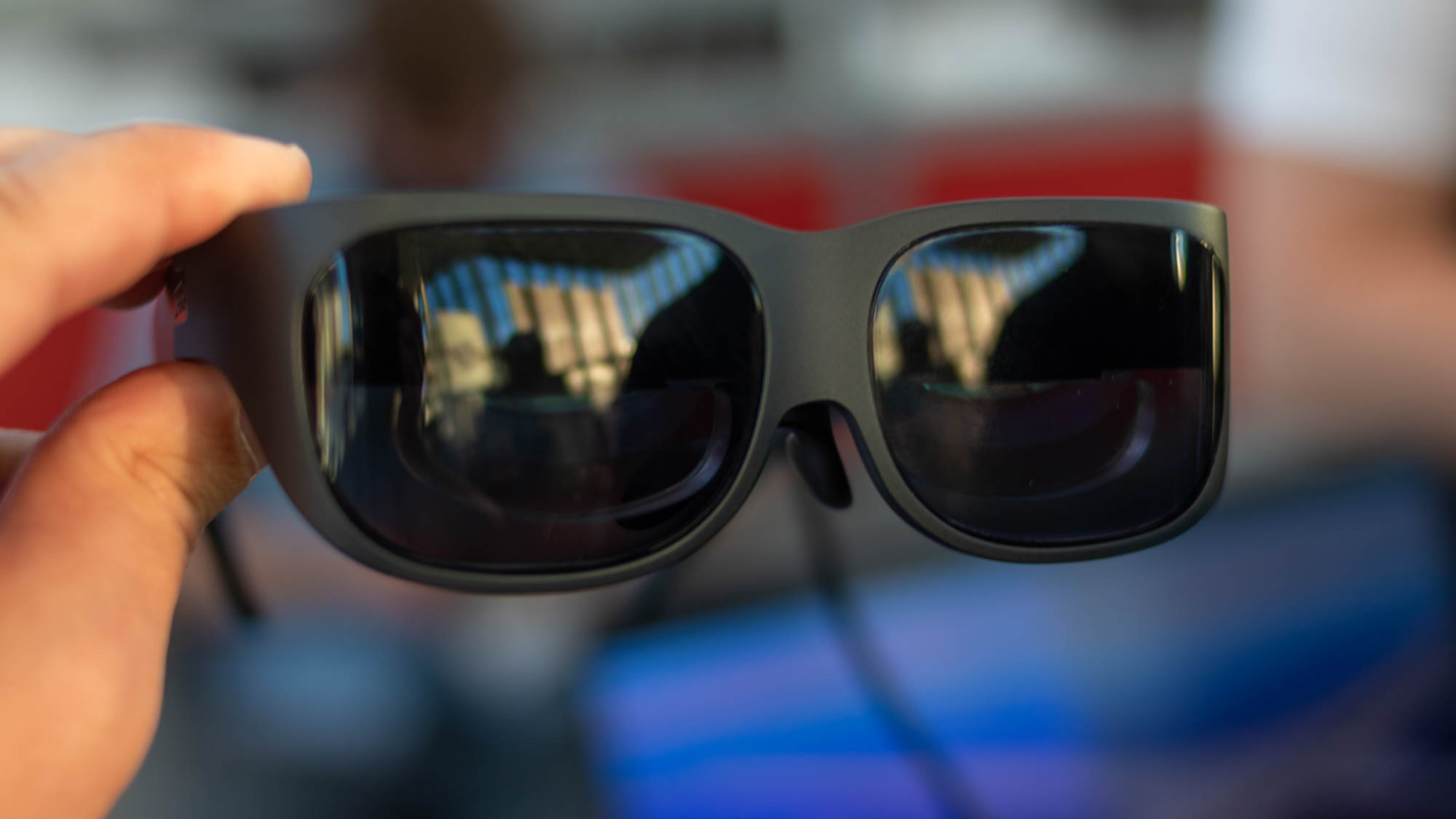 Has Lenovo found the ultimate business use case for smart glasses?
Has Lenovo found the ultimate business use case for smart glasses?Opinion Lenovo’s T1 smart glasses offer a virtual desktop that only you can see
By Bobby Hellard Published
-
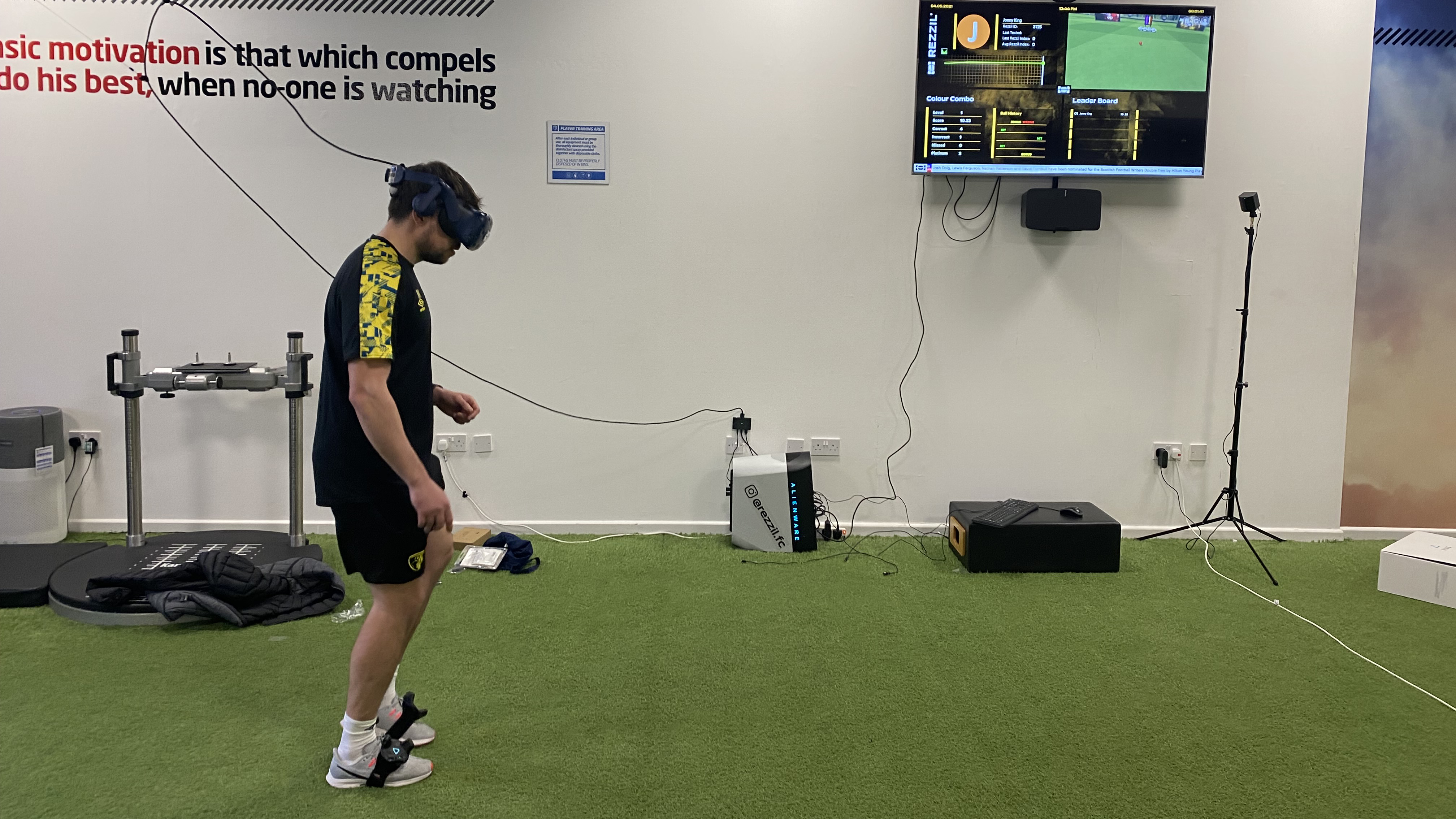 Virtual striker: Using VR to train Premier League stars
Virtual striker: Using VR to train Premier League starsCase Studies How one company is taking VR out of the boardroom and into the locker room
By Adam Shepherd Published
-
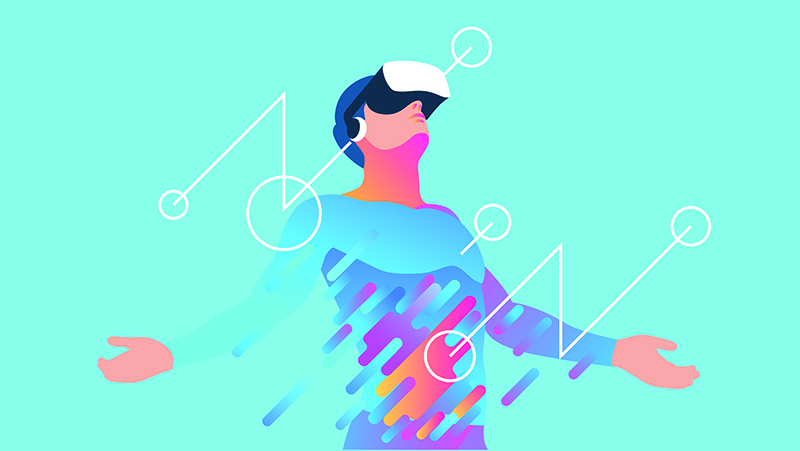 NeuPath and Cynergi will bring VR therapy to chronic pain management
NeuPath and Cynergi will bring VR therapy to chronic pain managementNews NeuPath will integrate Cynergi’s VR program with its remote pain management platform
By Praharsha Anand Published
-
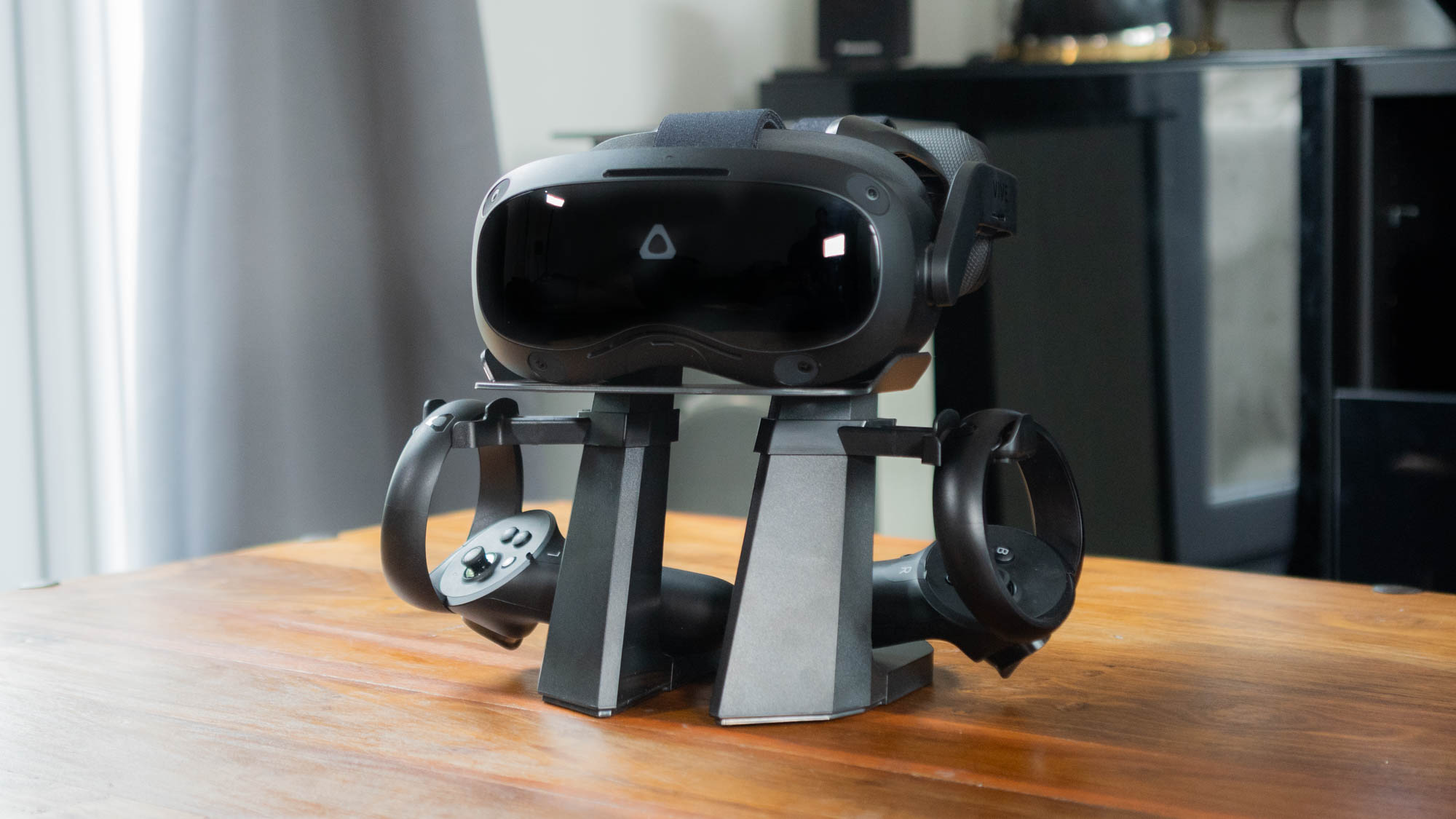
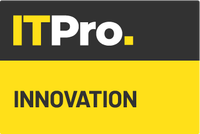 HTC Vive Focus 3 review: The future of VR is here
HTC Vive Focus 3 review: The future of VR is hereReviews This smart and stylish headset is a leap forward for the technology
By Adam Shepherd Published
-
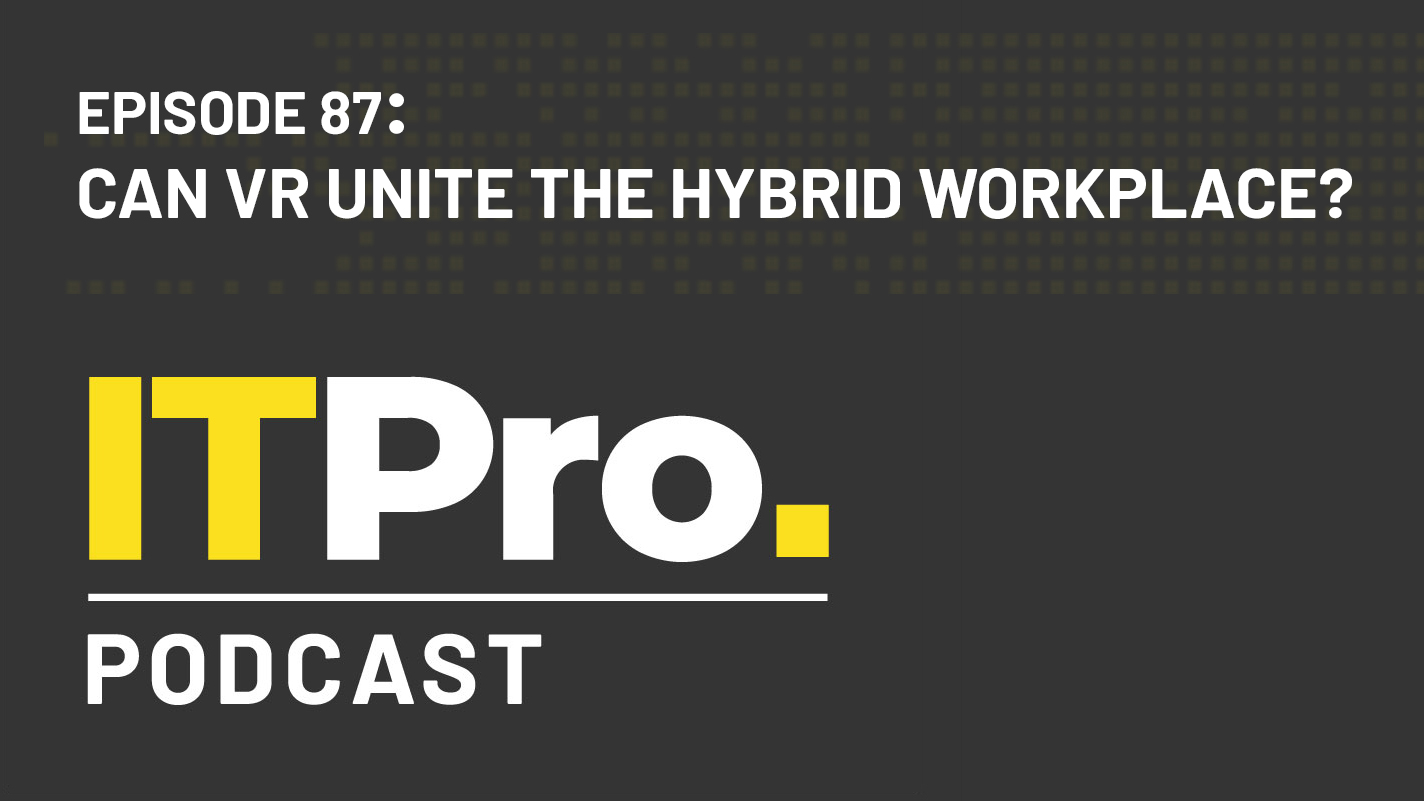 The IT Pro Podcast: Can VR unite the hybrid workplace?
The IT Pro Podcast: Can VR unite the hybrid workplace?IT Pro Podcast How one company is using virtual reality to bring its staff together
By IT Pro Published
-
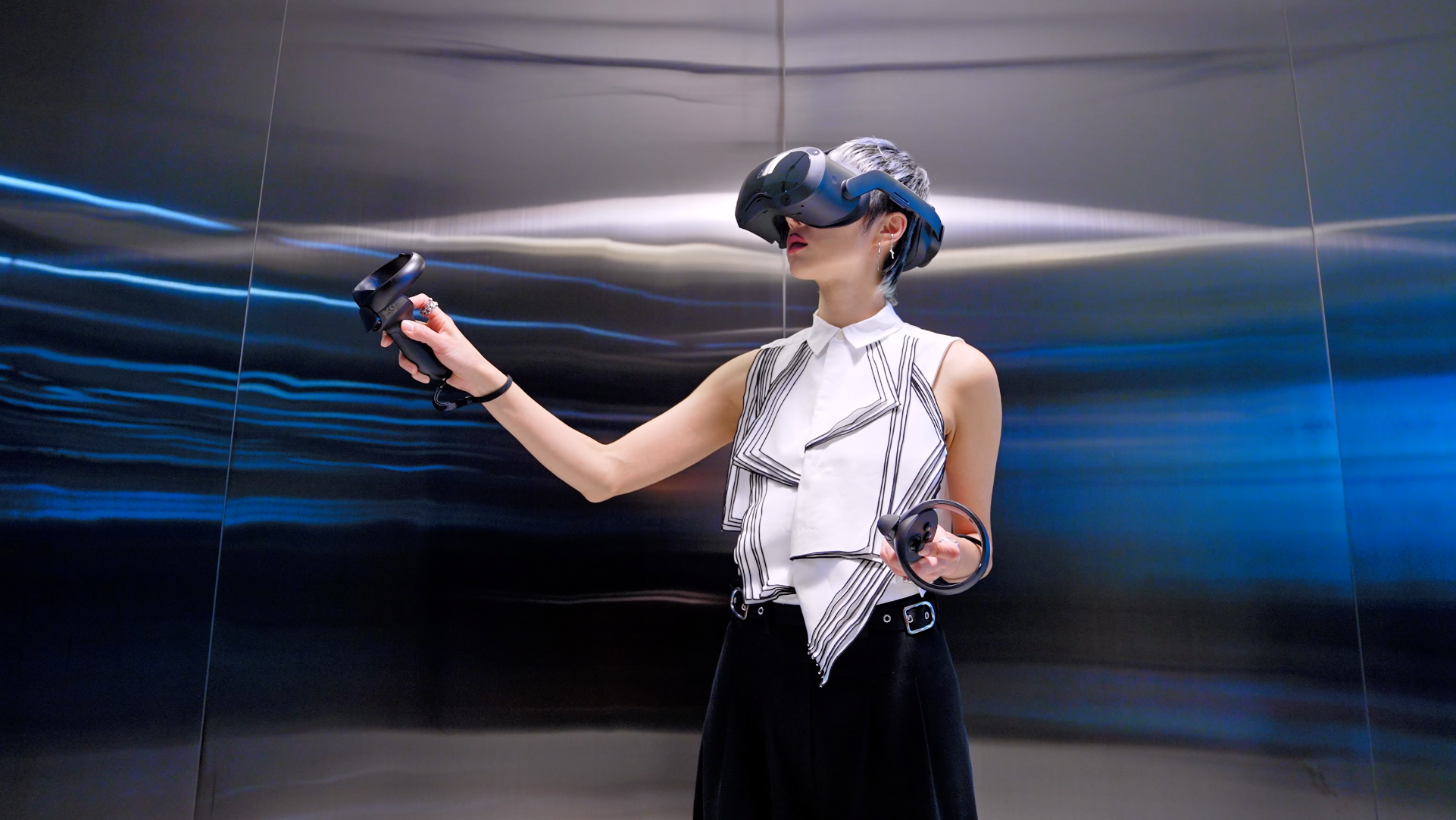 HTC launches new business-focused VR headsets
HTC launches new business-focused VR headsetsNews Vive Pro 2 and Vive Focus 3 include 5K resolution, larger field of view, and business management tools
By Adam Shepherd Published
-
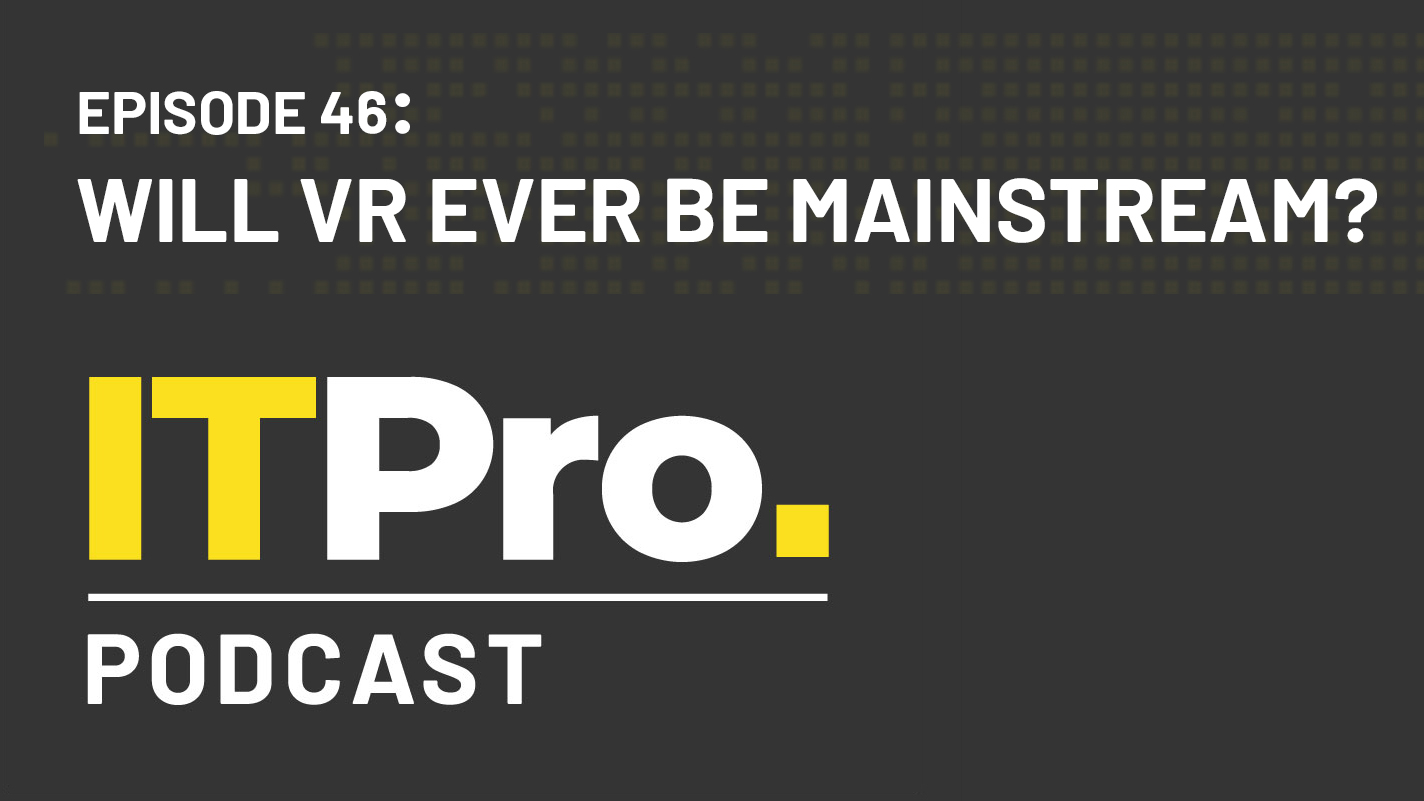 The IT Pro Podcast: Will VR ever be mainstream?
The IT Pro Podcast: Will VR ever be mainstream?IT Pro Podcast Despite years of development, VR is still a niche technology
By IT Pro Published
-
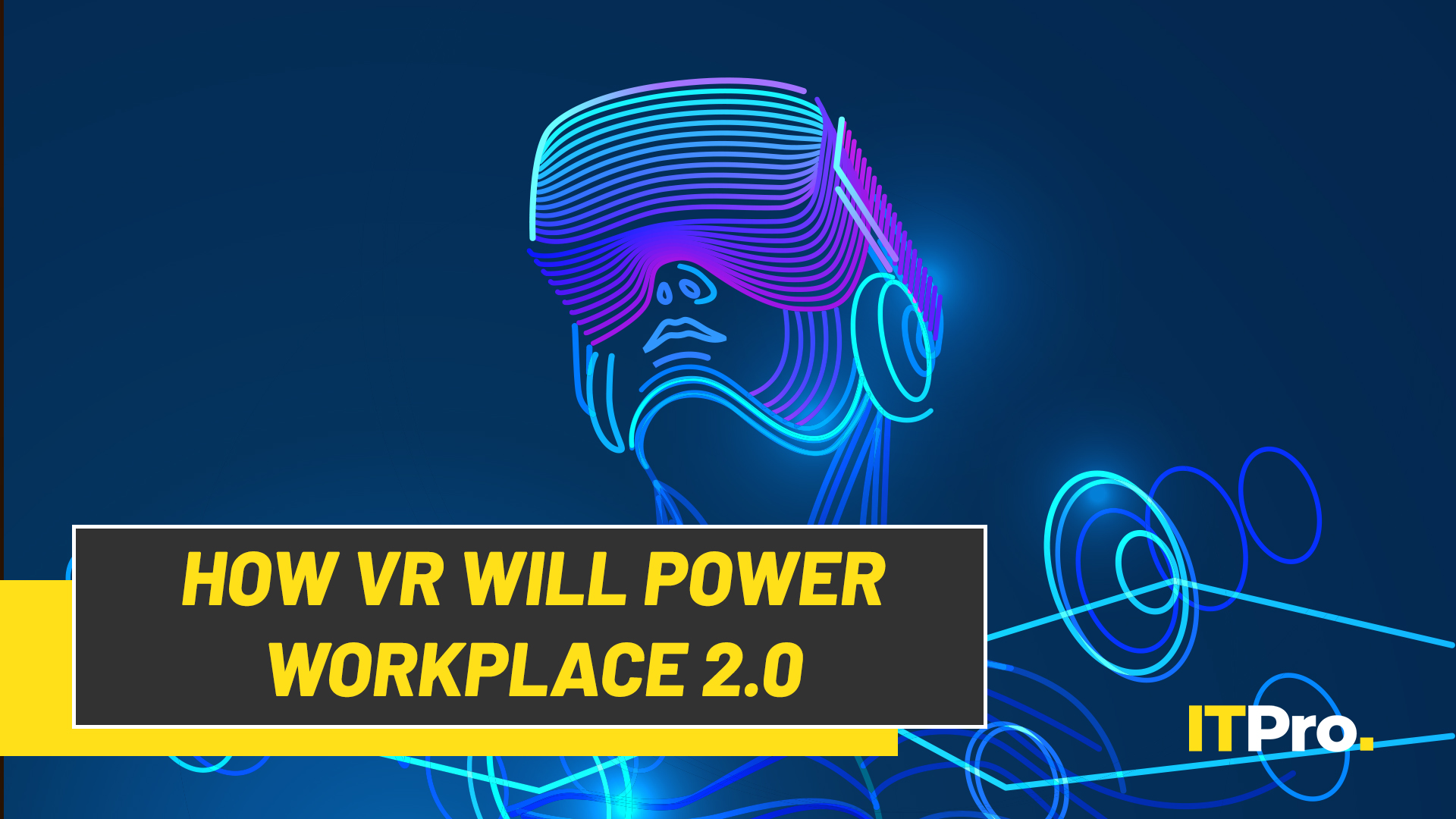 IT Pro Live: How virtual reality will power Workplace 2.0
IT Pro Live: How virtual reality will power Workplace 2.0Video The office of the future might not be a physical office at all
By IT Pro Published